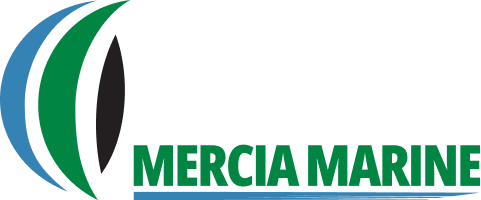Skip to content
- Back-stay
- Back-stays are critical for two reasons. First and foremost is to stop the mast from moving forward, secondly is to allow the adjustment in the amount of acceptable flexibility in the mast. Back-stays can be either temporary or permanently fixed, with those permanently fixed usually joining to gun-whales and running to the transom.
- Back-winded
- Back-winded is where mother nature wins the battle against helmsman of a yacht or dinghy and sails are winded to the opposite direction than is desired.
- Bail
- The act of removing water (often manually via pump or potentially even bucket!) from the floor of your vessel. Prevalent in some more susceptible vessels are auto-bilge or self-bailing technology which can be either manually or automatically triggered to drain excess water from the vessel.
- Ballast
- Material placed in hull of boat (usually keel or bilge) to ensure vessel is steadily weighted in the water providing stability. Often concrete made of concrete… steadier boats reduce the risk of a boat insurance claim!
- Barratry
- A barratry is an event carried out by the boat insurance policy owner or some other member of a boats crew that is firstly illegal (i.e. in breach of the governing law) and secondly that causes loss and/ or damage to the insured vessel or another third party vessel (or either’s cargo).
- Beam
- The width of a vessel across its widest section.
- Bilge Pump
- A boat’s bilge pump is a water pump that is used to remove water from the bilge (the lowest compartment on a boat where water collects). Since fuel can sometimes collect in the bilge, electric bilge pumps are carefully designed to not create sparks.
For boat insurance purposes float switches which turn on the pump when the bilge fills to a set level can be advantageous (particularly if mooring on swing-type moorings).
- Bind
- A boat insurance bind is the agreement by a client to accept a boat insurance quotation (commenced in an online purchase through payment processing success!) The bind is the agreement of all boat insurance terms and conditions and an agreed policy start date.
- Block
- A block is singular or multiple wheel pulley device whose sole purpose is either to alter the direction of a rope or to allow purchase.
- Boat Insurance
- Boat Insurance is what we do! Boat Insurance is the protection against loss or damage to your vessel, its passengers and/or its moorings (for full details and terms and conditions see our policy documentation section)!
- Boat Insurance Comparison
- Boat insurance Comparison is usually a website tool through which you can compare boat insurance policy costs for different companies &/or across policy types or vessel types/ values.
We are entirely independent so do not affiliate with boat insurance comparison websites, however our independence makes us very confident we provide great value, so we publish our currently active lowest policy costs through our boat insurance comparison webpage.
- Boat liability insurance
- Boat liability insurance is a collective term for boat insurance. It is simply a means through which others take on your risk of personal obligations arising through a future unforeseen event. This website provides a full range of such insurances!
- Boat Safety Scheme
- First commissioned in 1997 the boat safety scheme was started by the UK government agencies to promote the safety of installations and components on boat using the UK inland waterways. At that time this standard set of safety standards became a mandatory requirement for those wishing to obtain an inland waterways licence.
- Boltrope
- A rope that is positioned to reinforce the bottom of a sail.
- Bow
- The front part of a vessel.
- Bowsprit
- Potentially connected to the forestay this type of spar adorns the centre-point pointing perpendicular to the bow of the vessel.
- Broad Reach
- Travelling by sail whereby the winds are gently aft of beam.
- Bulkhead
- An upright structure within a vessel that is key to providing strength and rigidity across a boat.
- Buoy
- A buoy is any water-bound object that is used as a point of reference or navigational tool through it being chained or tied to the seabed. Can also be used to moor upon or to mark a naval lane.
- Buoy Moorings
- Buoy Moorings (also more commonly known as Swing Moorings) are a type of mooring that requires a circular area in which to moor. The key advantage of buoy moorings is that they allow a greater number of vessels to moor in a given area. Typically suited to vessels over five meters, these types of mooring are mostly found on rivers, lakes and harbours. Their size and scale can vary according to the vessel length/ beam they are intended for and they can be produced from a variety of materials such as aluminium, steel and plastic.
NB: For boat insurance purposes, any boat using this type of mooring that also has an auto-bilge pump fitted will get a reduced boat insurance quote!)
- Buoyancy
- Buoyancy is the ability of something to float in water. Often vessels have specific design merits which result in a greater buoyancy, thus providing a greater safety aspect or making a vessel more recoverable in the event of a capsizing or a fault in it’s hull.
- Buoyancy Aid
- An essential boat safety device! An article of clothing (usually inflatable) equipment that keeps a person afloat, always normally worn across the chest/ upper body.
- Burgee
- A simple small flag, usually located at the top of your sail mast, which supports identifying wind direction.

